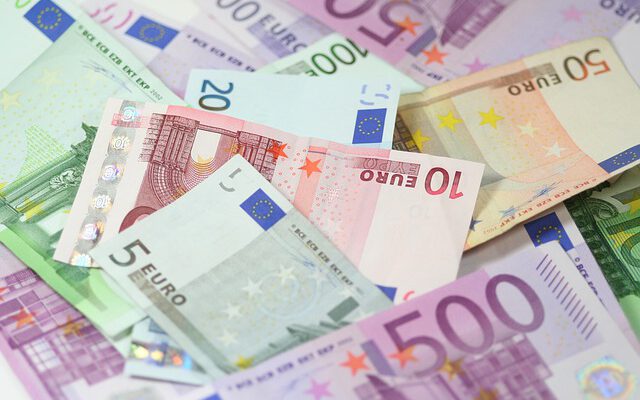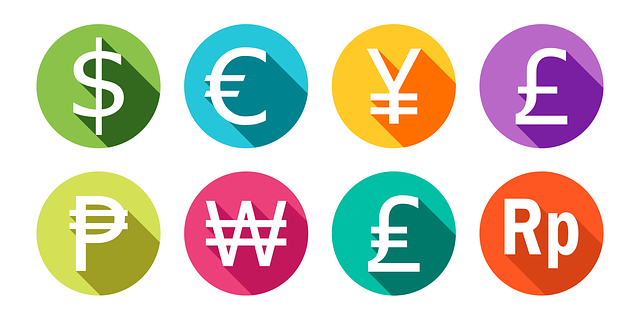8 Most Traded World Currencies in 2020

According to Bloomberg, $6.6 trillion worth of currency was exchanged every day in 2019. While this number itself is huge, it doesn’t give us in-depth knowledge about the currencies that are responsible for this tremendous drive for trading and achieving this big number. Forex is the largest and most liquid market. So, let’s check out some remarkable facts about what makes these currencies so popular.
The most basic and foremost step in understanding the market – which is also known as foreign exchange or currency trading – is to gain familiarity with some of the more commonly traded or as they like to be called ‘’Popular” traded currencies.
Here is our list of the Eight biggies in the trade currency world currently with the underlying traits and characteristics of each one.
1: The U.S. Dollar
The U.S. dollar, which is sometimes called the greenback, is first and foremost in the world of forex trading, as it is easily the most traded currency on the planet. According to sources, there was a time, its GDP represented 50% of the world’s output.” The dollar is also used many times as a benchmark for other countries to set their exchange rates. The U.S. dollar can be found in a currency pair with all of the other major currencies and often acts as the intermediary in triangular currency transactions. This is because the greenback acts as the unofficial global reserve currency, held by nearly every central bank and institutional investment entity in the world.
Besides, due to the U.S. dollar’s global acceptance, it is used by some countries as an official currency, instead of a local currency, a practice known as dollarization. The U.S. dollar also may be widely accepted in other nations, acting as an informal alternative form of payment, while those nations maintain their official local currency.
One other feature of the U.S. dollar is that it is used as the standard currency for most commodities, such as crude oil and precious metals. Thus, these commodities are subject not only to fluctuations in value due to the basic economic principles of supply and demand but also to the relative value of the U.S. dollar, with prices highly sensitive to inflation and U.S. interest rates, which can affect the dollar’s value.
2. The Euro
The euro has become the second most traded currency behind the U.S. dollar. It is used by 19 of the 27 EU countries, in what is known as the Eurozone. It’s also the world’s second-biggest reserve currency. The Euro wasn’t introduced to the world markets until January 1, 1999. With the euro being a widely used and trusted currency, it is prevalent in the forex market and adds liquidity to any currency pair it trades with. The euro is commonly traded by speculators as a play on the general health of the eurozone and its member nations. Political events within the eurozone can also lead to large trading volumes in the euro, especially about nations that saw their local interest rates fall dramatically at the time of the euro’s inception, notably Italy, Greece, Spain, and Portugal. The euro may be the most “politicized” currency actively traded in the forex market.
3. The Japanese Yen
The Japanese yen is easily the most traded of Asian currencies and viewed by many as a proxy for the underlying strength of Japan’s manufacturing and export-driven economy. As Japan’s economy goes, so goes the yen (in some respects). Forex traders also watch the yen to gauge the overall health of the Pan-Pacific region as well, taking economies such as South Korea, Singapore, and Thailand into consideration, as those currencies are traded far less in the global forex markets.
According to financial sense, “During times of uncertainty, such as the prelude to the Brexit vote, investors tend to gravitate toward the Japanese yen.” This can be attributed to the fact that Japan is one of the world’s largest exporters, in dollar terms. Did any of these currencies land in the top 10 surprises you? Let us know in the comments below. Oil is an important factor in determining the Yen’s value. As a major importer, high oil prices can weigh heavily on Japan’s economy.
The yen is also well known in forex circles for its role in the carry trade (seeking to profit from the difference in interest rates between two currencies). The strategy involves borrowing the yen at next to no cost (due to low interest rates) and using the borrowed money to invest in other higher-yielding currencies around the world, pocketing the rate differentials in the process.
4. The Great British Pound
The Great British pound, also known as the pound sterling, is the fourth most traded currency in the forex market. Although the U.K. was an official member of the European Union, the country never adopted the euro as its official currency for a variety of reasons, namely historic pride in the pound and maintaining control of domestic interest rates. As a result, the pound is sometimes viewed as a pure play in the United Kingdom. The UK’s uncertain future trading relationship with the EU is likely to impact the pound’s value.
Forex traders will often estimate the value of the British pound based on the overall strength of the British economy and political stability of its government. Due to its high value relative to its peers, the pound is also an important currency benchmark for many nations and represents a very liquid component in the forex market. The British pound also acts as a large reserve currency due to its historically high relative value compared to other global currencies.
5. Australian Dollar
The Australian dollar being the newest entry in the club is the world’s fifth most traded. Australia is a major exporter of coal, iron, copper, and other mined commodities. It’s also a major importer of oil. Shifts in the trading volumes and prices of these commodities can have a direct impact on the value of the Australian currency.
6. The Canadian Dollar
Also known as the loonie, the Canadian dollar is probably the world’s foremost commodity currency, meaning that it often moves in step with the commodities markets—notably crude oil, precious metals, and minerals. With Canada being such a large exporter of such commodities, the loonie often reacts to movements in underlying commodities prices, especially that of crude oil. Traders often trade the Canadian dollar to speculate on the movements of commodities or to hedge positions in the commodities market.
Canada’s major trading partner is the US – accounting for more than 75% of all exports and 50% of all imports. Canada’s economy and the Canadian dollar’s value tend to be sensitive to changes in the American economy and currency.
7. The Swiss Franc
Switzerland has a reputation for financial services and banking secrecy. This, coupled with the country’s sound monetary policies and low levels of debt, have made CHF a ‘safe-haven’ currency. The Swiss National Bank has been known to be quite active in the forex market to ensure that the franc trades within a relatively tight range, to reduce volatility, and to keep interest rates in check.
8. The Chinese Renminbi
Sometimes referred to as the ‘yuan’, China’s currency is the eighth most traded worldwide. As China is a major exporter of manufactured goods, the Renminbi’s value depends heavily on the country’s terms of trade. China’s major trading partners are the United States, Europe, and Japan.
However, the renminbi has been depreciating since June and is currently hovering around 7 yuan per US dollar. The current value, the lowest since December last year, raised some eyebrows as it could signal currency manipulation.
To conclude,
The Foreign Exchange Market is the most heavily traded in the world, with these 8 most traded currencies accounting for nearly 90% of all Forex trades. Every currency has specific features that affect its underlying value and price movements relative to other currencies in the forex market. Understanding the factors that move a currency is a pivotal step in becoming a savvy participant in the forex market.
In this pandemic situation, the value of many currencies has been impacted by the global COVID-19 pandemic. Those that have been hit hardest are emerging market currencies. Several of these economies are heavily reliant on oil and commodity exports, and both are currently experiencing a sharp decline in demand. That being said, the U.S. dollar, the euro, the yen, the British pound, the loonie, and the Swiss franc are and will remain major currencies to watch.















